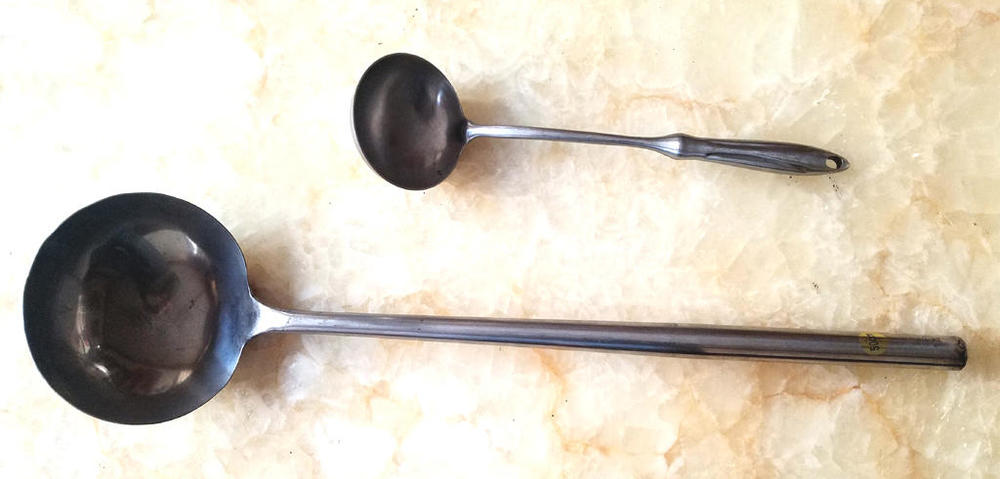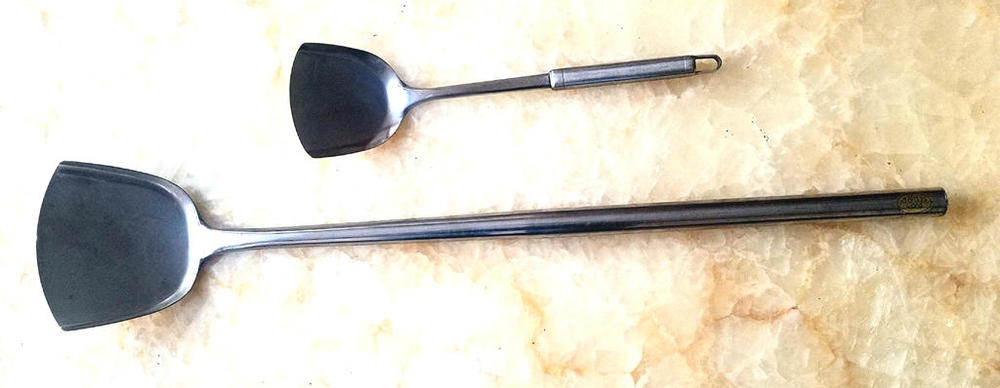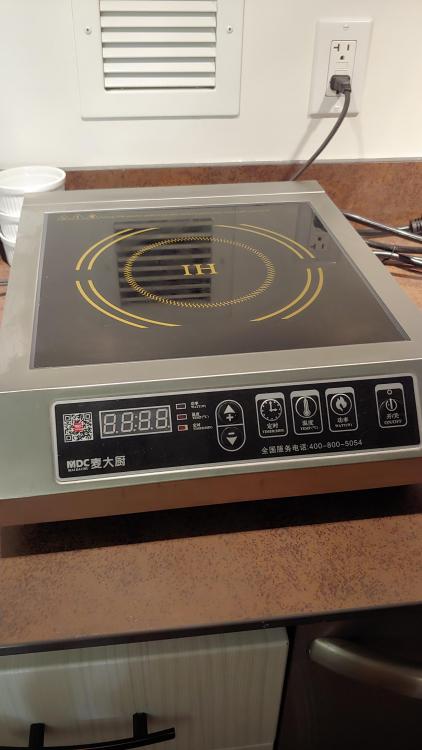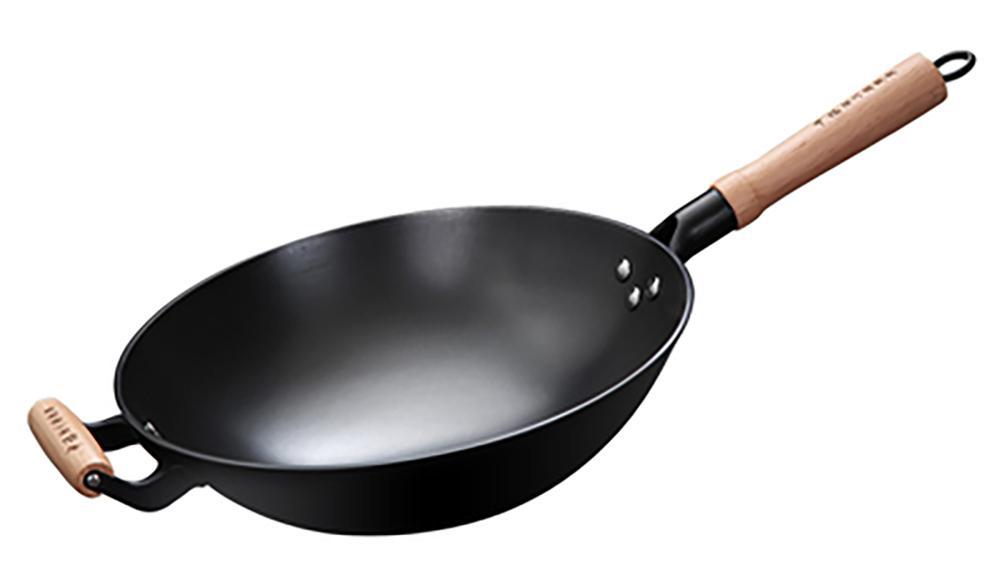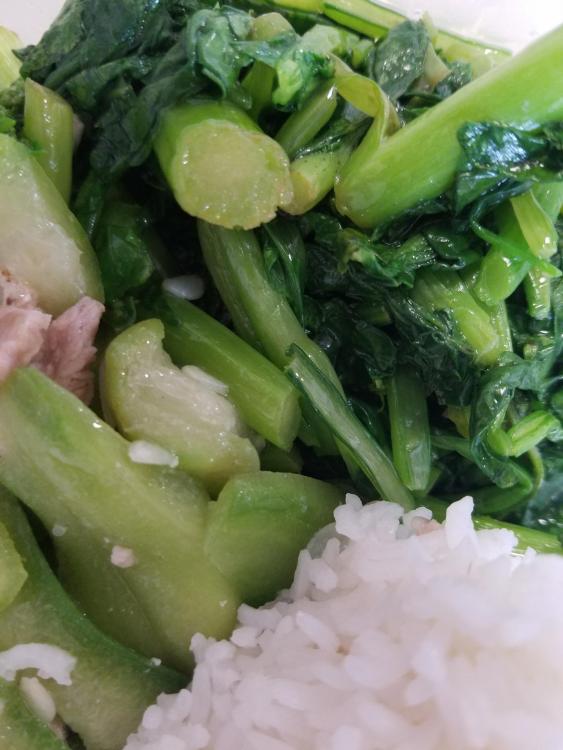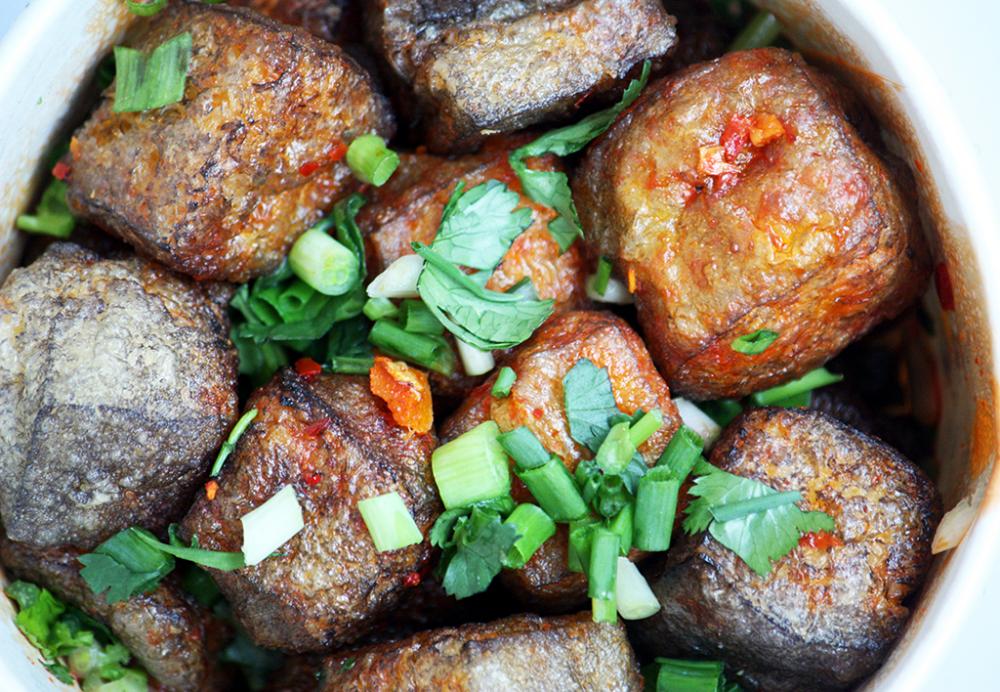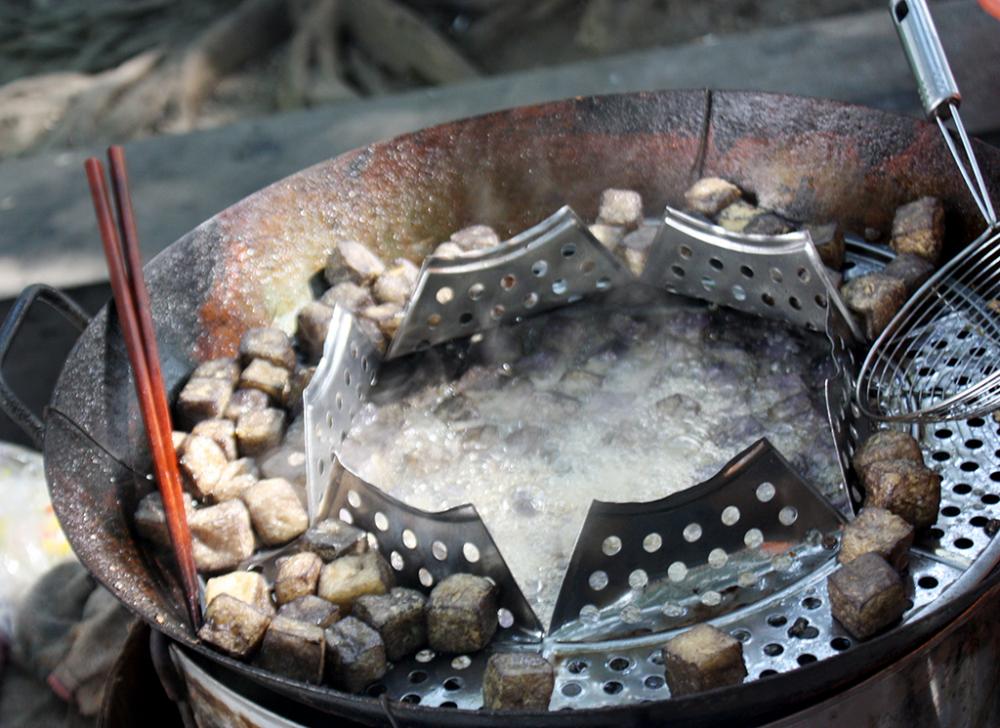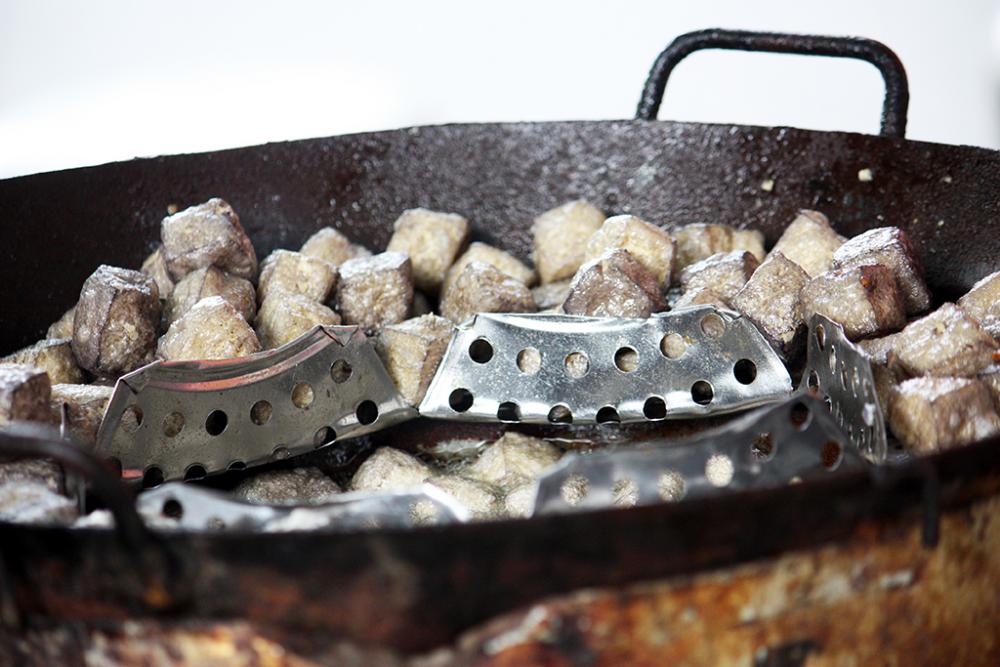Search the Community
Showing results for 'wok'.
Found 5,142 results
-
I'll keep an eye out for another chance to rescue some unwanted leaves. If the chance doesn't come now, I'll look for them next summer. Thanks! It's warm and spring has sprung. It's subtle in the desert, but if you know where to look you can find color. The washes in the evening have a delicate floral perfume that I haven't managed to identify yet. Brittle bush, ocatillo, native trees and fairy dusters The campfire has come into its own, partly so we can enjoy the night sky and partly to keep the trailer cooler. We've been making heavy use of a burger basket, a wok-shaped double basket and Papa's Pan, with an occasional appearance by a cast-iron skillet. Papa's Pan - I've written about it before, here - has given us a new favorite way to cook brussels sprouts. Cut them in half, load them into Papa's Pan with 2 or 3 strips of bacon cut into 1" chunks, drizzle with enough olive oil to provide good pan searing and a hint of balsamic vinegar. Close the pan. Put it over high flame until you hear it sizzling, give a few shakes, flip and repeat, then set it over a warm flame until it's done and the rest of dinner is ready. This method would also work on stovetop, inside an oven or under a broiler - any source of high heat - but over an outdoor fire with an omelet pan there's no mess to clean up when juices drip from the pan, and there's no need to keep stirring with a spoon or spatula. The first night we tried it we added some stray asparagus spears. They didn't suffer from the treatment a bit. That, plus burgers from the basket, and a bit of green salad, were all we needed. My burger fell apart because it stuck to the basket. Guess I needed a bit of oil first. Other campfire dinners: Chicken thighs with a spicy rub, inspired by a recipe from Paula Disbrowe's charming book Cowgirl Cuisine. The beans here are fava beans - my first attempt, and none too impressive. The favas will need more work, but the chicken is always a hit. Numerous grilled-meat and -vegetable dinner salads, like this one: Tequila chicken dinner salad, not yet tossed (above), and served (below). I'll write about pecans and salmon another time.
-
We've been set up for outdoor cooking, with little inclination to actually do it, since we landed in the desert. Oh, there have been a few campfires, with food cooked over them. However, it's been colder or windier than we would like. Compared to almost anywhere else in the country the "colder / windier" bit would be a laugh. We compare it to the comfort of cooking indoors, in the Princessmobile, where we can have a furnace running if need be. Earlier this week we decided it was time. I had some deep-frying to do, and the camp stove was the preferred source of heat. I went to fire it up...and discovered that it had quit working. I couldn't build pressure in the fuel container, because the pump didn't have a good seal. If anyone wants an explanation of how a Coleman camp stove (or lantern) pump works, feel free to ask. Suffice it to say that I know far more than I did, and we got it working without buying spare parts, but the outdoor cooking was put off for a few days. Today, we inaugurated the stove along with the wok I inherited from a dear friend last fall. Joan would have been proud. I wrote about the stuffed, deep-fried avocados in detail, in the eG Avocado Cook-off topic. I think it's worth doing again, with some possible revisions. My darling would always prefer something like the pork roast we've been feasting from for the past 2 weeks, with variations on what to do with the leftovers. But he's happy to see me having fun in the kitchen, and willing to put up with avocados for the cause.
-
im not sure why ovens need firmware. just because firmware exists these days doesn't mean its necessary for everything. CSO woks fine w/o it. remember the camera in the oven ? soy could watch your ' roast 'on an iPhone? I was vey interested in the Anova oven. firmware efforts should have been used for hardware first. Ludite i am these days.
-
How many times can we re-use oil? I fry in peanut oil, then pour off what's left into a jar, which I keep in the fridge. When I fry, I pour the lot from the fridge into the wok, then top it up using fresh oil. Is this madness? No fishy odors have emerged yet.
-
I use a stainless steel cup with lid. I think you can get ones with a mesh strainer, but I didn't bother; I just set one over the top when I'm emptying my wok. It's convenient, because I can tip in hot oil. Since my kitchen is cool, I keep it on the counter, so I dip oil from it into the wok as needed.
-
It's not actually a wok. It's a northern Chinese/Mongolian hotpot chafing dish. A soup is cooked elsewhere then added to the outer ring. Various ingredients (lamb/mutton and vegetables) are added by the diners, who essentially cook dinner themselves in the soup - fondue style. Very popular in winter. In fact, I hate winter food in China. It's the same every day. Here in the south we don't have the dishes with the central funnel/pot. The central pots seem to have various uses. I'm not sure which is most traditional. (Your chip and dip analogy may not be so far off. I confess I had to Google 'chip and dip'.) I will consult wiser people than me in the morning. You caught me at bedtime - I'll add more tomorrow, unless someone chips or dips in first.
-
Please, I need your help. I can't imagine what this wok would be used for. That piece in the middle is welded to the wok. Do you have any idea how this would be used? I saw this in my Chinese restaurant supply place and the young man that owns the store wasn't much help. The wok is about 14 or 16 in. wide. It looks like it would make a heck of a good chip and dip dish but I can't imagine the Chinese sitting down to a feast of chip and dip. Much less, eating them out of a wok. I'm sorry, I can't get the second picture out of this post
-
Restaurant woks are. And red hot, so you want a long handle to prevent roasted chef syndrome.
-
Must be a big ass wok
-
Not unknown, but certainly unusual. Near my home is a small kitchen equipment store, selling mostly domestic non-electric stuff (apart from a few rice cookers. Recently, it announced a closing down sale. Yesterday I popped in to have a look. I wasn't intending buying anything; I'm well-equipped. Among the items on offer were two pro bits of kit that surprised me. They were the equivalent of $11.50 USD for the two, so more out of amusement than anything else, I bit. I'll probably never use them, but they make an interesting ornament for the kitchen. Professional wok scoop. Regular, domestic size at top for comparison. Professional wok ladle. Ditto. The scoop is 74 cm / 2 feet, 5 inches long and the ladle 62 cm / 2 foot.
-
While the 'gadget' is not unusual or unknown, its circumstances certainly are. Yesterday at our local 'transfer station', while the DH was unloading our detritus, I found a two-handled, round-bottomed carbon steel wok in the station shed. This shed holds things that folks no longer want but are willing to leave for others and the finds can be wondrous. So I found this wok, never used, in its original plastic bag...a kind of plastic you never see anymore...with much Chinese writing on it and in English: "Hand-made Steel Caldron (sic) Made in People's Republic of China". Much of the plastic is melted/fused/? to the metal and it's going to be work to get it off. I am curious as to how old it might be with that on wording on it.
-
...set the wok on fire, twice in one cooking session, because the induction 3000 w power setting seems like a good idea to really get the wok going....
-
haha, that party above reminds me of one we held some 20 or so years ago. Some friends of my wife over for chicken dinner. They arrived in the afternoon for beers and chips or what it was, eventually I put the chicken in the oven, set the timer and we continued with the above. 90 or so min later the timer goes off, it's close to 8pm, we're hungry for crunchy chicken. Alas, the oven was not on and the chicken was a pale cold carcass, LOL More chips and beer, for dinner around 9:30, but it was good! Oh, and that one time, the first time, I made a brisket. Did not know about the plateau, darn thing sat at the same temp for over two hours. Little kids got hungry, eventually I just had to take it out, was more medium rare and a bit chewy, but not too bad. Now I make it hours ahead of dinner and if it's done I wrap it in foil and put it in a small cooler to keep warm, works much better and the kids don't start to eat the furniture :-) Edit to add: Oh, one of the first times I used my outdoor wok burner the wok got red hot in the center. Turned the fire down a bit, thinking that's probably really hot while I poured in the oil. Which instantly ignited into a nice fire ball! Luckily I had the lid of my much smaller stove top wok handy to snuff it out! Luckily nobody saw this happen in the family, so it actually didn't happen, but it was still a bit scary, right there, under the big eucalyptus tree....... Nowadays the burner is further away from the trees and the lid is always at the ready :-)
-
Don't they all do that? Every one I've had did. My current one does beep then switch off, but there is a reasonable time delay before the power cuts. I've never timed it. I'll test it later, if I remember. It's 2,100 watts which I find more than enough for stir-fry wok cooking when I have to use it that way, but that happens very infrequently. I mostly use it for long, slow, acidic wok braises. 🤣
-
I've really enjoyed using this lately (while only briefly each time): It's a relatively inexpensive induction hob - 3500 Watts!!! It brought about 12 quarts of water to a rolling boil in just under 12 minutes. It doesn't really like it when I lift the pan - it beeps at me when I do so, but at least it doesn't shut off. So far, I've only had time to use it to bring the stockpot to a boil (as a test) and to stir fry a few veggies in my carbon steel wok, which was an absolute pleasure - so much easier than when I used to use my crappy underpowered gas stove. One of the things that makes it inexpensive is that you can only choose from about 10 power levels, which has been fine so far for what I've been doing. Sometime soon in the future I'm going to get a Vollrath induction unit (I'm thinking the 2600W since so far I haven't had the need to use this one at 3500W except to boil water - the stir fries haven't gone over 2400W and even that is crazy hot) which you can control the output power in 1% increments, from 0 to 100% and also, rather than cycling the power on and off for the power level, it adjusts the power intensity. Plus, to control the power there is a knob rather than push buttons... but that's for another post.
-
@liuzhouIs there a reason why you went with cast iron woks as opposed to carbon steel?
-
Haha! Of course 36 cm. Have edited. That said, I have seen 36 inch and much larger woks. But not at home!
-
I mentioned elsewhere on eG that my faithful assistant in the kitchen, my wok had passed away. I bought a new one, of course. A 36cm uncoated, round-bottomed, handmade, cast iron chap, but recent personal attention has had to be paid to certain bureaucratic affairs with the Chinese government regarding my business have kept me busy recently. That has now been resolved and it's time to move on to dealing with new wok. It needs deep cleaning to remove the machine oil it is coated in both inside and out then carefully seasoned before being put into service. But it's more complex. A 36cm wok is too large for my everyday needs. I live alone. Also, I can't use a round-bottomed wok on a stand alone induction cooker which I sometimes require, so I also bought a 34cm flat bottomed fellow for those needs. It too is cast iron and non-coated. It too needs the same attention. So the next couple of days, I'm going to be having fun dealing with that.
-
Just different style of pizza. I wouldn't want a thick crust pizza baked so hot, obviously. But for a semi Neapolitan pizza, this Make a different. It's a bit like the discussion on wok hei in home cooking. Is it necessary or even desired in every dish? - no, but for those who love it's flavor in certain dishes it's worth working for.
-
Not to split hairs, but semi Neapolitan and wok hei are, for the most part, realms of the obsessive. Steel plate was cutting edge a decade ago, but now it's pretty much become the defacto method for making pizza at home. It's everywhere. Every major book on pizza mentions steel. I've even seen Chris Bianco talking about it on Jimmy Kimmel. In the course of my travels, I've probably run across 3000 people who've purchased steel plates. I do spend a lot of time with obsessives, but I also brush shoulders with plenty of folks that just want have fun making pizzas with their families and not make a big thing out of it. Out of all these thousands of steel adopters, obsessive or not, young or old, beginner or master, not a single one has ever preferred the 10+ minute bakes they were getting on stone to the sub 7 minute bakes on steel. Now, out of this group, a handful of people had have odd broiler configurations that didn't play well with steel, so not everyone that buys steel is grinning ear from ear, but, that's the oven's fault (and the steel plate manufacturer's fault for fraudulent marketing), not the steel itself.
-

China Sichuan Cuisine (in Chinese and English)
Burmese Days replied to a topic in China: Cooking & Baking
Ladies and gentlemen, ... It arrived! I ended my last post reflecting on all the effort it took to find this book. I acknowledged that in all likelihood, this book would not be worth the work. I'm happy to say I was wrong. This book is a wonderful find, and I hope all of you get the chance to enjoy it one day. The most interesting part of all is this the recipe layout. I've never seen such cleanly outlined recipes. For the sake of an example, here's the Mapo Tofu recipe from the book. As the colloquial Sichuan dish in the West, it should be a good point of reference for many that read this post. Here's a transcription - Ingredients 300g tofu, 60g stir-fried beef mince, 20g baby leeks (chopped into sections), 80g cooking oil Seasonings A 25g Pixian chili bean paste, 10g ground chilies, 6g fermented soy beans Seasonings B 3g salt, 5g soy sauce, 1g MSG Seasonings C 1g ground roasted Sichuan pepper, 200g everyday stock, 30g cornstarch-water mixture Preparation 1, Cut the tofu into 1.8cm3 cubes, blanch in salty water, remove and soak in water. 2. Heat oil in a wok to 120°C, add Seasonings A and stir-fry to bring out the aroma. Add the stock, fried beef mince, season with Seasoning B, and simmer for 2 to 3 minutes; add the leeks and thicken with cornstarch-water mixture; Transfer to a serving bowl and sprinkle with Seasoning C. So a lot to go through here. I'm going to split up my comments and critiques into two categories. One that critiques the recipe and one that critiques the recipe layout/choices. Comments on the recipe Beef Everything about the beef was a little strange in this dish. They called for the beef pre-cooked and didn't go over the cooking step at all. While this would normally be fine all though a little strange, in mapo tofu, it's bad. The whole point of the beef is to use the fried beef oil as the base for the dish. The mince itself is tertiary. Because the recipe never outlined cooking the beef, the average home cook would most likely not realize that they needed to save the oil for cooking the Pixian bean paste. Aromatics The first thing I noticed when I read this recipe was that it had no aromatics besides the Sichuan pepper powder if you count that. No garlic. Not even the white portion of the green onion. This struck me as strange till I looked a little deeper at what the hell "baby leeks" are in this context. Welcome to the wacky world of obscure vegetables and aromatics. Where scientific names are never listed, and regional names differ wildly. Were they calling for Dacong, aka welsh onion (Allium Fistolum)? It's very often used across Northern China Is it talking about actual leeks (Allium ampeloprasum)? Or perhaps it meant Chinese chives, aka garlic chives (Allium tuberosum). No, this has nothing to do with garlic, garlic scapes, or green garlic besides the fact that its an allium. Speaking of garlic, it could be green garlic; immature garlic pulled before the bulb has matured (Allium sativum). It looks quite like a large scallion. Possibly it's garlic scapes, the immature flower stalks of garlic (Allium sativum). They're often removed by farmers to focus all the garlic's energy into bulb growth. Because of this, they're plentiful and cheap across China. I can come up with at least five more, but I think you get the point The characters listed for it are "蒜苗节20克". From my limited google skills, I've come to the conclusion that they're suanmiao, aka green garlic. A good sub if you can't find any in your area is... well... garlic. I'd add it right after you finish frying seasonings A but before you add the stock. 10-15 seconds should be enough time for it to cook. While you'll miss a lot of the pleasent textural aspects, and the garlic flavor will be more homogeneous in the dish, it should work pretty well as far as subs go. If you take anything away from this, know that dacong are not leeks, no matter how often they're translated as leeks in the West. They both taste similar, but dacong is tender and soft while leek can be tough and crunchy. Dacong closer to a scallion than an onion in flavor, unlike leek. Also, Chinese leek can refer to dacong, leeks, and Chinese Chives - so be careful with that term. This is why sources like liuzhou's Chinese Vegetables Illustrated thread are so important. So after that detour, back to the recipe. Critiques of the recipe layout and recipe choices Seasoning categories The seasonings categories are a brilliant idea. It's the linchpin of what makes these recipes so concise and neat. It makes perfect sense when you think of most wok cooking. A basic fried rice or stir-fry are cooked very fast. The timing between adding different types of ingredients is crucial and can be a surprisingly narrow range. Take a look at this basic gailan stir-fry. I've listed estimated cooking times for each step. Quick fry of the beef and remove ~45 seconds Fry the garlic and ginger~ 10seconds Throw in onion and chili ~30 seconds Splash of Shaoxing wine Toss in the (mostly) cooked beef ~15 seconds Add soy sauce Quick mix ~10 seconds Add cornstarch slurry Quick mix ~10 seconds Add blanched gailan Quick mix ~10 seconds Drizzle with some toasted sesame oil You can see that once you start, it's a very fast process. This leaves the cook with very little time to fiddle with their recipe books and even less time to deliberate over what to do. Compare that to this version of the recipe, which consolidates each ingredient type into categories. Ingredients - Beef slivers, blanched gailan Seasonings A - ginger, garlic seasonings B - onion, chili Seasonings C - soy sauce, cornstarch slurry Quick fry of the beef and remove ~45 seconds Fry the seasonings A ~10seconds Throw in seasonings B ~30 seconds Splash of Shaoxing wine Toss in the (mostly) cooked beef ~15 seconds Add Seasoning C Quick mix ~10 seconds Add blanched gailan Quick mix ~10 seconds Drizzle with some toasted sesame oil While it may arguable be a longer recipe, it feels neater. It takes steps away from the frantic parts of the cooking process and places them at the start, where you have all the time in the world. It forces the cook to create a form of mise en place. Of course, a good cook can use both recipes perfectly well and make great food. But to someone like me, who does not prepare well enough ahead of time while cooking, the second recipe is inarguable better. While the idea may be brilliant, the execution is less than perfect. For example, 2 out of three of the ingredients in seasonings C are used before seasonings C is called for. There is no need for a whole category when you're just going to list for the ingredients individually anyway. Measurements As you can see, the measurements are all given in grams. I can't count how many cups vs. grams arguments I've read on forums, but I can tell you this is the first truly grams only cookbook I own. Instead of a teaspoon, it calls for things down to a single gram's worth. I'm not sure how I feel about this. I greatly prefer grams to cups, but for sums smaller than 5 grams~ volume just seems better. I'm willing to be wrong, though, and I'm excited to try this book out. I might need to get a scale with better resolution. Conclusion I'm very excited to use this book more. I showed the mapo tofu recipe as a point of refrenece for everyone, but this book has much more to it than just mapo tofu. There are so many interesting recipes that I'm excited to try. I'll update this thread if I make anything else fro the book. -
The kitchen has accidentally discovered umami or the gods are on my side.for once. Pork ribs with shiitake. (And the compulsory Bok Choy). Some flavour for a change. The cook even waved the bottle of soy sauce in the rough direction of the wok for once.
- 703 replies
-
- 12
-

-
16. 臭豆腐 (chòu dòu fu) – Stinky Tofu Another fermented bean curd preparation is 臭豆腐 (chòu dòu fu) or stinky tofu. This comes in various versions, but all have one thing in common – they stink! My favourite type is that which originated in Changsha, the capital of Hunan, the province to the north of Guangxi. Twenty-five years ago, I lived in a small Hunan city and behind the central market was a maze of streets. One of those streets was lined by hole-in-the-wall shops, all with low trestle tables and stools outside, selling stinky tofu and beer. I could always find the street in the maze – simply by following my nose. I could get there blindfolded. Changsha Stinky Tofu Traditionally, stinky tofu uses firm tofu which is then dried and then fermented for months in a brine also containing amaranth leaves, pork, dried shrimp and various vegetables. The Changsha style also incorporates winter bamboo shoot, and shiitake mushrooms, as well as koji, Aspergillus oryzae, a fungus used to promote fermentation During the fermentation process, the tofu develops a ‘hairy’ exterior, then begins to turn grey, at which time it is considered ready. Normally, the fermented tofu is then deep fried until black or dark brown and the outside is crisp. It is commonly served with a chili sauce. Hunan is chili central in China. In Hong Kong, it is eaten with hoisin sauce – preposterous idea, if you ask me! Here I can buy it on the streets from itinerant vendors with their portable stoves and cunningly designed woks in which the fried tofu can sit in these cages around the rim to drain, but also to keep warm. Stinky tofu being deep fried in Hunan Fried stinky tofu 'resting' in a cage at the rim of the wok. Once you get past the smell, the taste is creamy and mild, contrasting with the chilli sauce. Sort of like a funky cheese. Other, well-known varieties include Shaoxing stinky tofu. Shaoxing city in eastern China’s Zhejiang province is also, of course, famous for Shaoxing wine. Sichuan stinky tofu includes Sichuan peppercorns in the brine, while Tianjin in north China makes a milder, light-coloured version with less of the tell-tale smell. I've even seen stores selling 5-year-old Shaoxing stinky tofu brine on China's online shopping sites. 5-Year Old Shaoxing Stinky Tofu Brine Taiwan is also known for its love of stinky tofu, which they cook in many ways, besides deep frying. I’ve never been there, so can’t comment on that too much.
-
At home I've used electric (slow, uneven heat, no flame), gas (great, versatile, even heat) but settled on induction (very fast, super control, perfectly even heat, buzz at high a high power, no flame). It took a while to get used to but now given the choice I would go for induction over gas, but my perfect stove would be 4 induction rings with a central gas wok burner for non magnetic pans, roasting peppers etc.
-
Well, my unscientific experience with both gas ranges as well as induction in a restaurant kitchen supports the conclusion that induction does indeed come to temperature quicker. It brought water to a boil at an alarming rate, much quicker than any gas range I've seen (only exception is a chinese wok burner - but as far as regular sized burners go the induction was much quicker).


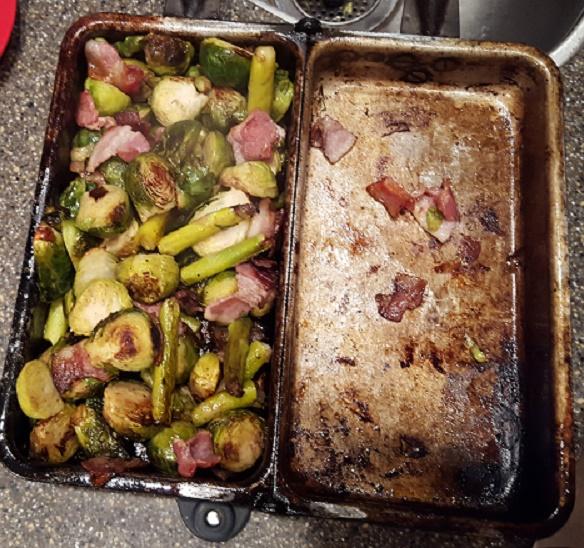
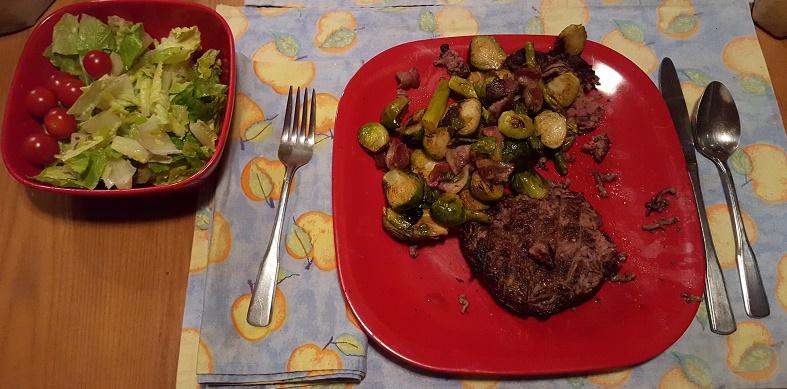
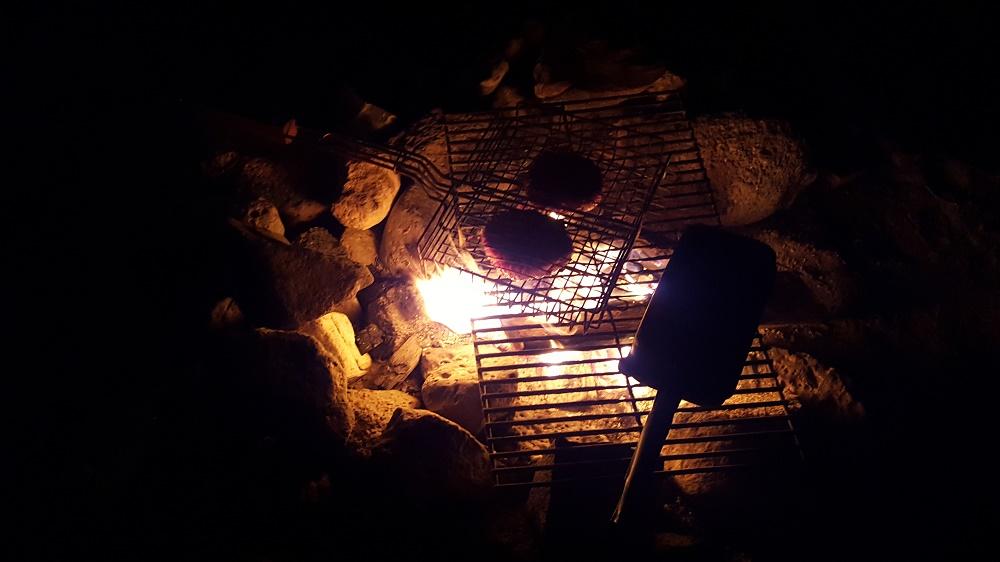
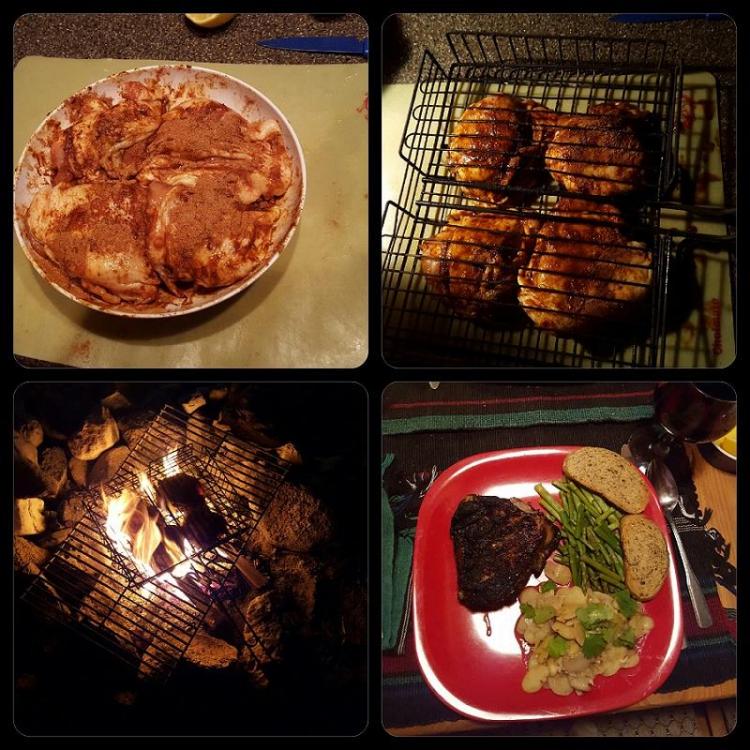


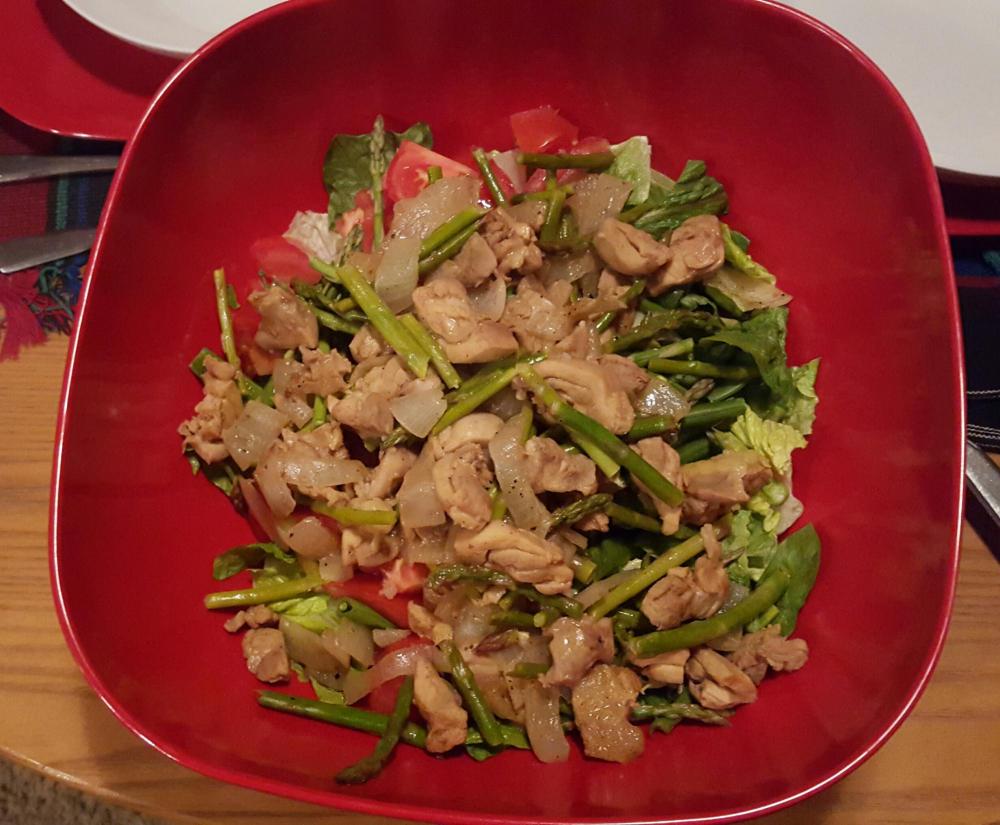
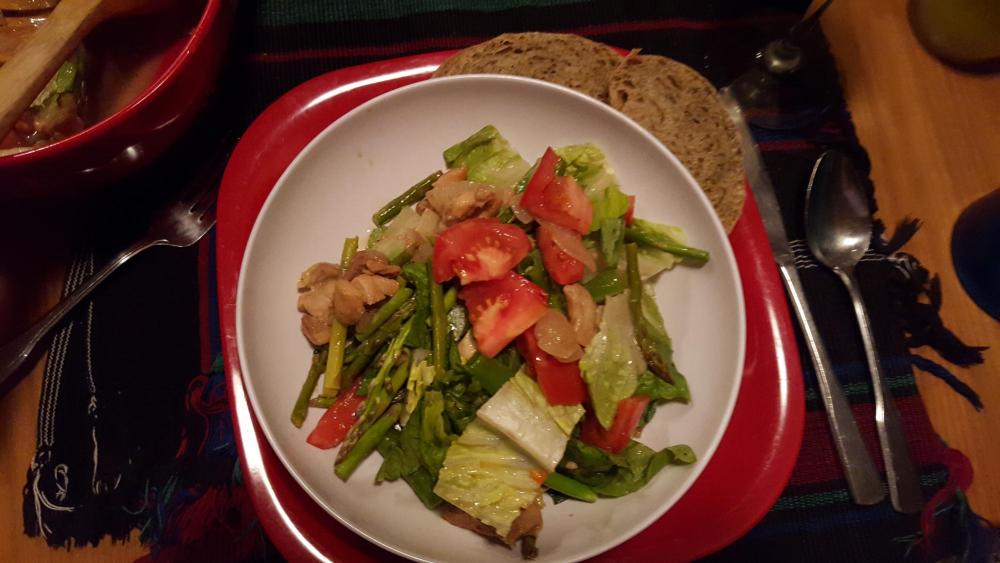
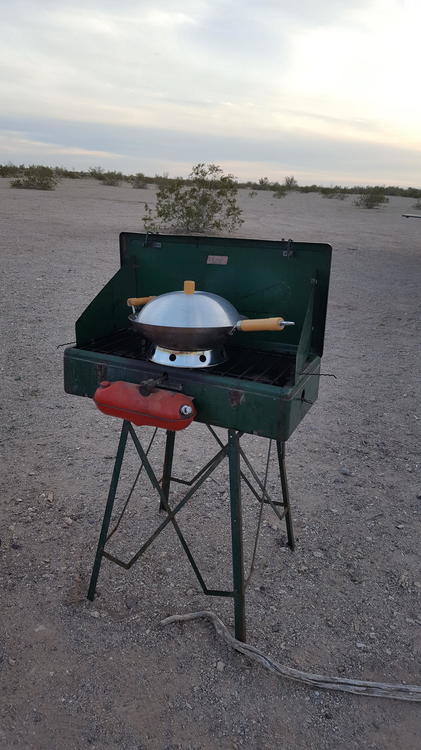
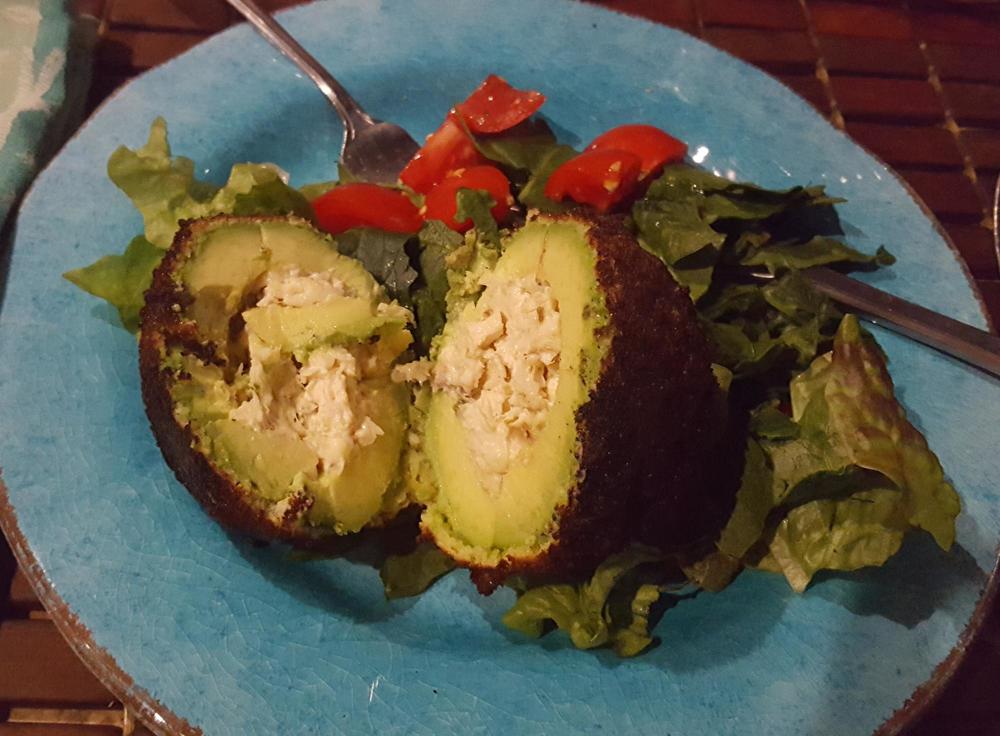





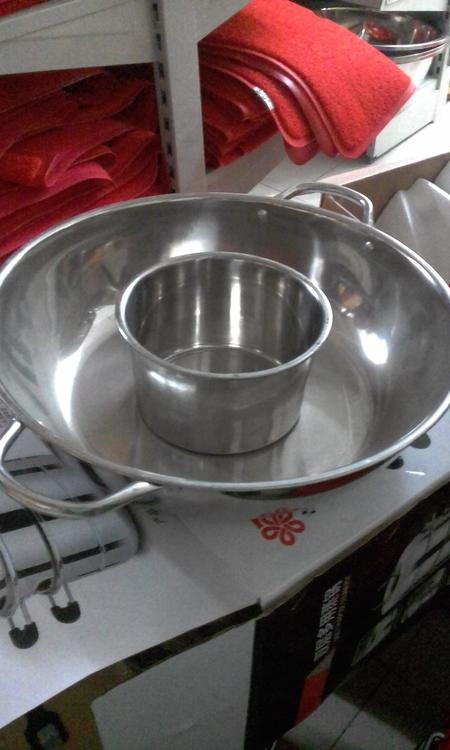
.jpg.a6c6912ef4a016d7d203ace3d01b815a.jpg)


